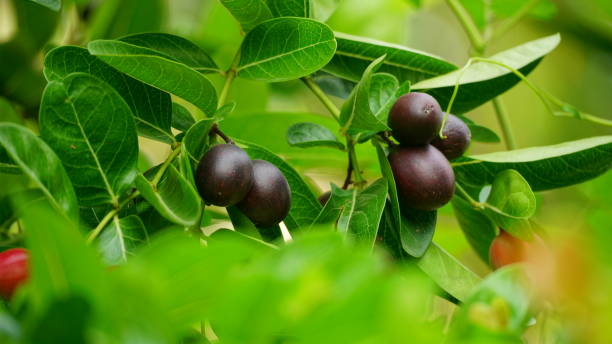1. What Are Žižole?
Žižole, commonly known as jujube or Chinese dates, are small, oval-shaped fruits that originate from Asia and the Mediterranean region. They are known for their shiny skin, sweet-tart flavor, and nutritional richness. As they ripen, žižole change from green to deep red or brown, offering both crunchiness when fresh and a chewy, date-like texture when dried.
Though lesser known in Western countries, žižole are treasured in traditional medicine and culinary cultures for their wide range of uses. Whether consumed raw, dried, or steeped into teas, these fruits are praised for their unique combination of flavor and health benefits.
2. The History and Cultural Significance of Žižole
The cultivation of žižole dates back over 4,000 years, with roots in ancient China and the Middle East. In Chinese herbal medicine, žižole were prescribed to support sleep, digestion, and immunity. Their use eventually spread through trade routes to Europe, where they became a traditional part of autumn and winter diets.
In the Mediterranean and Balkan regions, žižole are often enjoyed fresh off the tree or preserved in homemade syrups. Some cultures regard them as symbols of good health and longevity, reinforcing their deep-rooted presence in both tradition and daily life.
3. Botanical Features and Growth Habits
The žižola tree (Ziziphus jujuba) is a hardy, deciduous plant that grows well in warm climates with plenty of sunshine. It has thorny branches, glossy green leaves, and small yellowish flowers that produce the fruit after pollination.
These trees are drought-resistant and tolerant of poor soil, making them suitable for sustainable agriculture. Their resilience and low-maintenance nature have contributed to their increasing popularity among home gardeners and small-scale farmers alike.
4. Nutritional Composition of Žižole
Žižole are packed with nutrients, particularly vitamin C, which supports the immune system and skin health. They also contain essential B vitamins, iron, calcium, potassium, and dietary fiber.
Low in fat and cholesterol-free, these fruits make a healthy snack that can provide a natural energy boost. Their antioxidant compounds, including flavonoids and polysaccharides, help protect the body from oxidative stress and cellular damage.
5. Health Benefits of Consuming Žižole
One of the most recognized benefits of žižole is their calming effect on the nervous system, which makes them a natural remedy for insomnia and anxiety. Studies have shown that compounds found in jujube may help improve sleep quality and reduce stress.
Additionally, žižole promote digestive health, support liver function, and may assist in regulating blood sugar levels. With regular consumption, they can enhance overall wellness and contribute to a balanced, nutritious diet.
6. Ways to Eat Žižole
Fresh žižole have a crisp texture similar to apples, making them perfect for snacking or adding to fruit salads. As they ripen and dry, they become sweeter and more concentrated in flavor, ideal for baking, cooking, or steeping into herbal teas.
In some cultures, dried žižole are boiled into syrups or added to savory stews for a hint of sweetness. Their versatility allows them to be used in both sweet and savory dishes, enhancing meals with flavor and nutrition.
7. Žižole in Traditional and Herbal Medicine
In traditional Chinese medicine, žižole are believed to tonify the blood, calm the mind, and strengthen the spleen. They are frequently included in herbal blends to treat fatigue, irritability, and digestive disorders.
Modern research supports some of these uses, pointing to žižole’s anti-inflammatory and immune-modulating effects. Their long-standing medicinal use has made them a staple in herbal pharmacies and natural healing practices.
8. How to Grow Žižole Trees
Žižole trees are relatively easy to grow and require minimal maintenance. They prefer full sun, well-drained soil, and protection from strong winds. Once established, they are highly drought-tolerant and rarely suffer from pests or diseases.
With proper care, a žižola tree can produce fruit within 3–4 years. Pruning in late winter helps maintain shape and encourage healthy fruit production. Their low upkeep and environmental resilience make them a great addition to gardens in temperate climates.
9. Culinary Uses Around the World
In Asia, žižole are commonly used in soups, teas, and desserts, often paired with ginger or goji berries for added health benefits. In the Middle East and North Africa, they are added to rice dishes or enjoyed as sweet, dried snacks.
European countries such as Italy and Croatia preserve žižole in syrup or brandy, creating traditional seasonal treats. The global culinary landscape is slowly rediscovering žižole as chefs and home cooks seek natural ingredients with depth and cultural heritage.
10. The Future of Žižole as a Superfood
As interest in superfoods and functional nutrition grows, žižole are gaining attention for their remarkable health benefits and sustainable cultivation. Their potential as a natural sleep aid, digestive support, and immune booster makes them attractive to wellness consumers.
With more research and marketing, žižole could become a staple in health food stores and global kitchens. Their rich history, impressive nutrition, and environmental adaptability position them as a fruit of the future, ripe for rediscovery.


